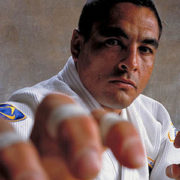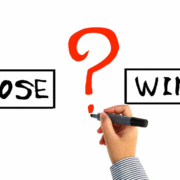Training your training partner – part 3
Rolling is competitive. You and your training partner are both trying to submit each other. The best way to do this is to stick to your A-game and only use the moves and tactics that you are best at. While this is a good way to submit your current opponent, it isn’t a very effective way to submit your future opponents.
To improve in jiu-jitsu, and to be able to beat better opponents, you need to improve your moves, timing, tactics and recognition of the game. This necessarily means doing things differently to the way you are doing things now. If you only practise your A-game, you never take the opportunity to change and hence improve.
Your training partner can help you with this. Recall from part 1 that there are different types of rolling. Don’t assume that your partner knows what type of roll you want. If you tell your partner, “I’m working on half guard sweeps when I have an underhook” or “I’m working on regaining the half guard from side control” your partner has more information to work with. Be specific, don’t just say “I’m working on half guard”.
This gives your partner information about what kind of roll you are expecting. How they respond is up to them. One response is to let more of the roll occur in half guard, so you can practise your offense while your opponent practises defence. Or your training partner may choose to avoid the half guard altogether. This lets you know that your priority isn’t practising half guard sweeps, but rather it should be practising your entries into half guard.
By telling your training partners “This is what I will be doing during this roll”, they will necessarily ask themselves how they will respond to this. Now both parties have a purpose in mind for the upcoming roll, and each has an opportunity to evaluate their success after the roll.
Rolls that have a purpose cause you to reflect on the roll. Reflection is a necessary component of improving.



Leave a Reply
Want to join the discussion?Feel free to contribute!